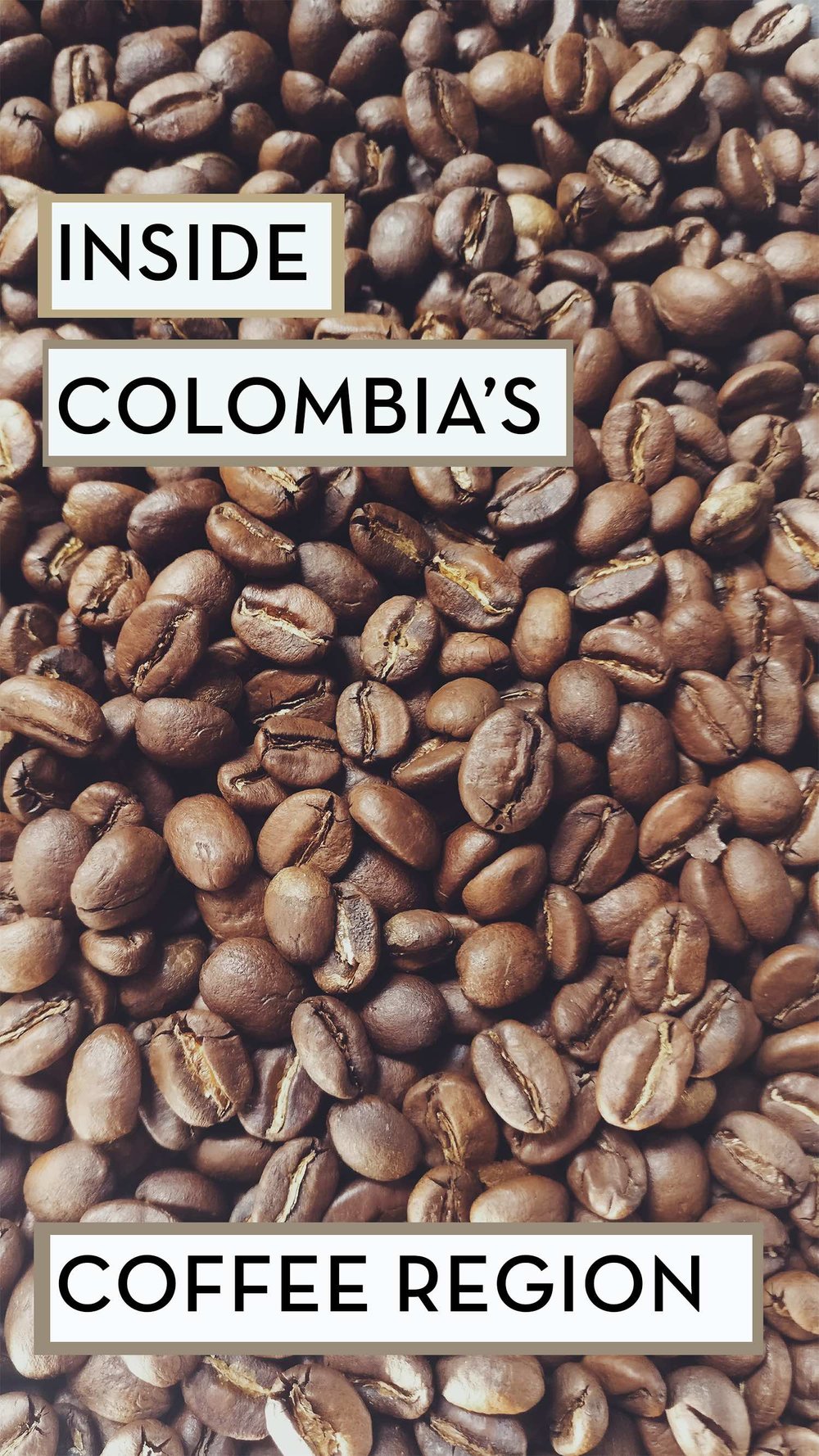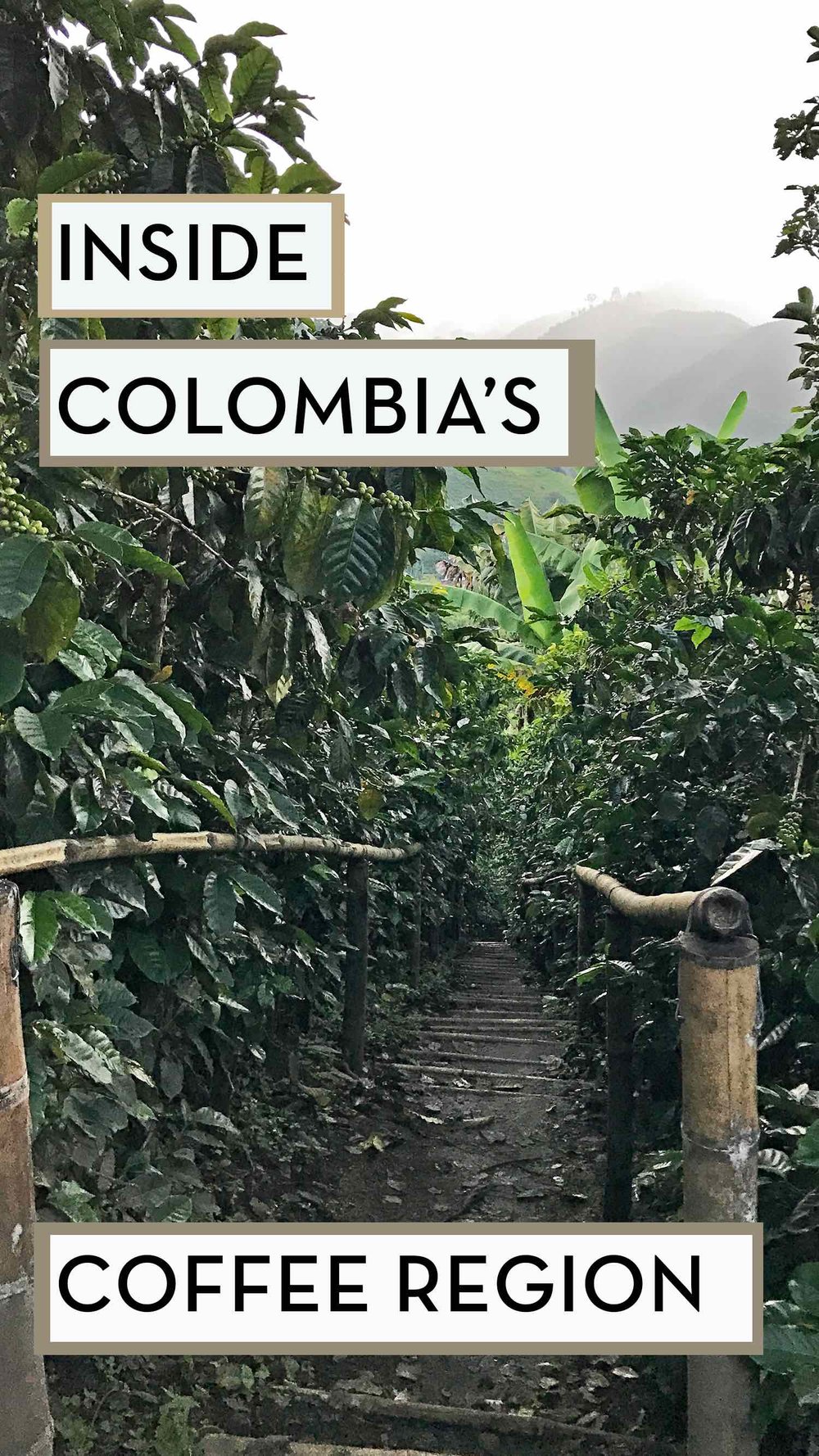A Taste of Colombia's Rich Coffee Region
/Written with the assistance of our good friend and fellow traveler Charlotte Landsheere of A Better Mañana.
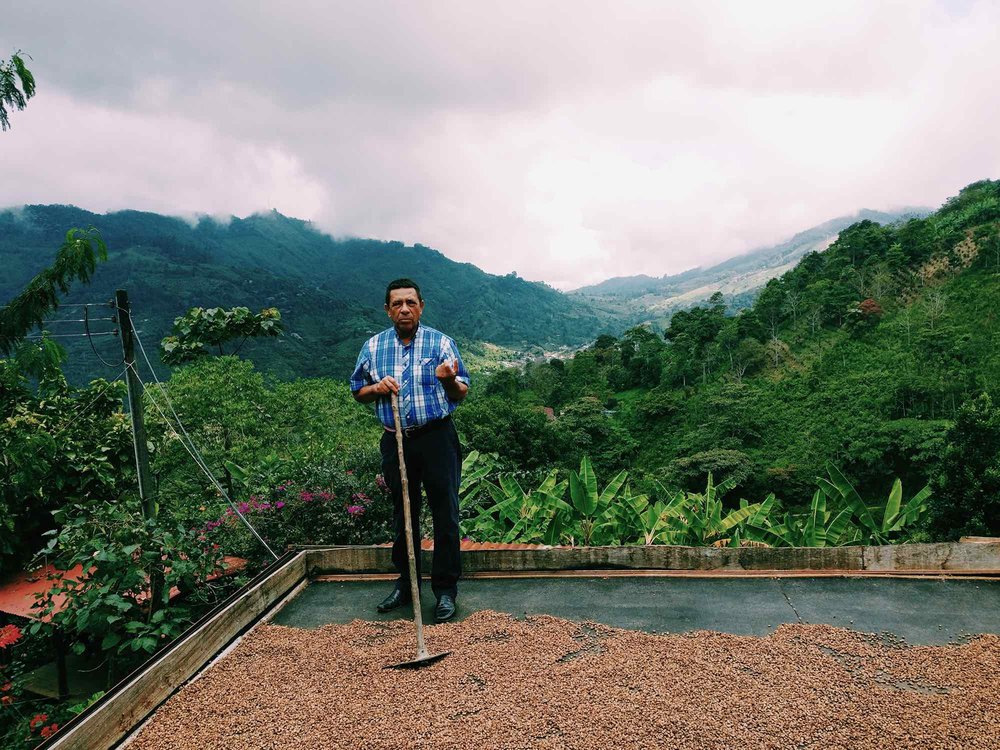
Waking up, breathing in the scent of roasted coffee, and taking a sip of that black gold… The delight of drinking coffee is a ritual many of us are addicted to.
But how many of us actually know where that cup of coffee comes from? The soil it was grown from, the farmers who planted, cared for and harvested the beans, how the beans are selected and roasted.
Traveling through Colombia’s coffee region, "Eje Cafetero" or "the Coffee Triangle", offers the perfect opportunity to experience it all!
After finishing her graduate studies, Charlotte packed her bags and left for Colombia. Charlotte Landsheere, a Belgian citizen, is determined to find and share inspiring stories that connect and unite people from around the world on her blog A Better Mañana.
"I'm not sure exactly how I landed on Colombia, perhaps because it is currently not the typical “go-to destination” - however, I know that will change soon. This country has everything. I'm traveling through the country in a bit of an alternative way; you could call it “slow traveling”. In each place I visit, I get in touch with the local community and often stay for a couple of weeks to volunteer and exchange skills and ideas in each location." - Charlotte
While doing this, Charlotte is able to dig deeper into local traditions, Colombia’s history and what moves the Colombian people today. In meeting with passionate people or empowering projects, she shares her inspiring stories for a better “mañana” on her blog; Mañana: Wondering and Wandering our World.
One of those locations she chose to linger in, happened to be a tiny little village called Pijao in the mountains of the main coffee region of Colombia.
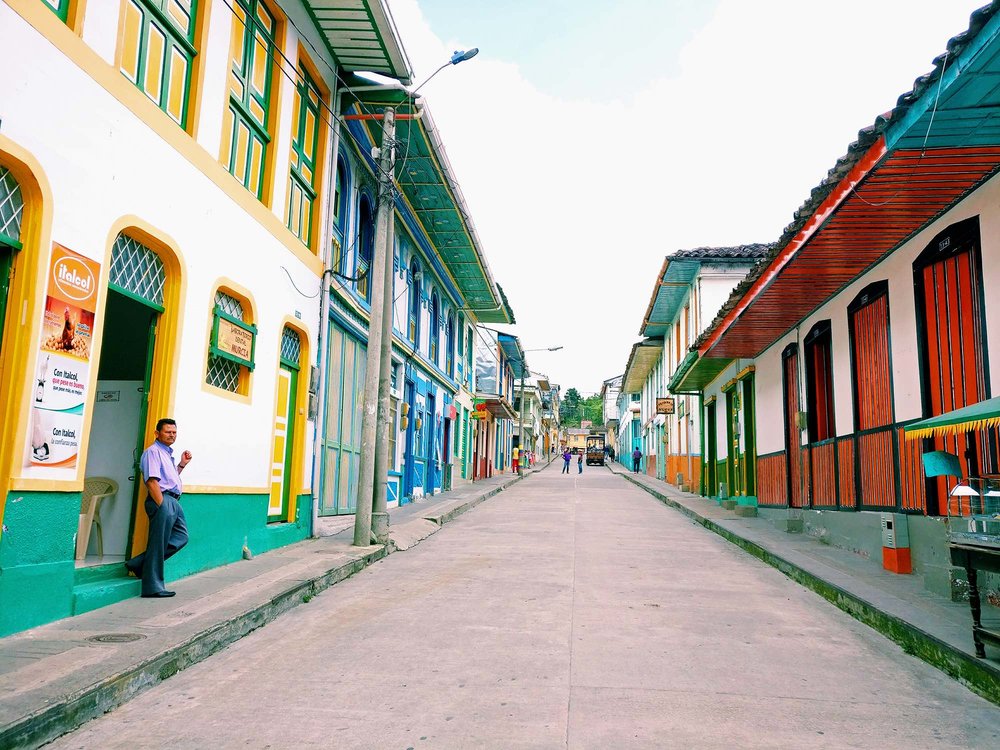
Pijao town in the colombian coffee region
Pijao is the first town in South America to join the “Cittaslow” or "slow city" movement, in which communities work on sustainability and cultural heritage.
Charlotte had the opportunity to live on a biodiverse coffee farm for a couple of weeks, teaching her Colombian host family English and learning all about coffee farming.
"It was one of my most inspiring experiences in Colombia so far!" - Charlotte
So how exactly do we end up with that delicious cup of coffee?
Coffee Growing & Processing
Coffee beans are actually the fruit of plants. The coffee plant is a bush or tree that usually grows to a height of 3–3.5 m (9.8–11.5 ft) with dark green leaves and white aromatic flowers.
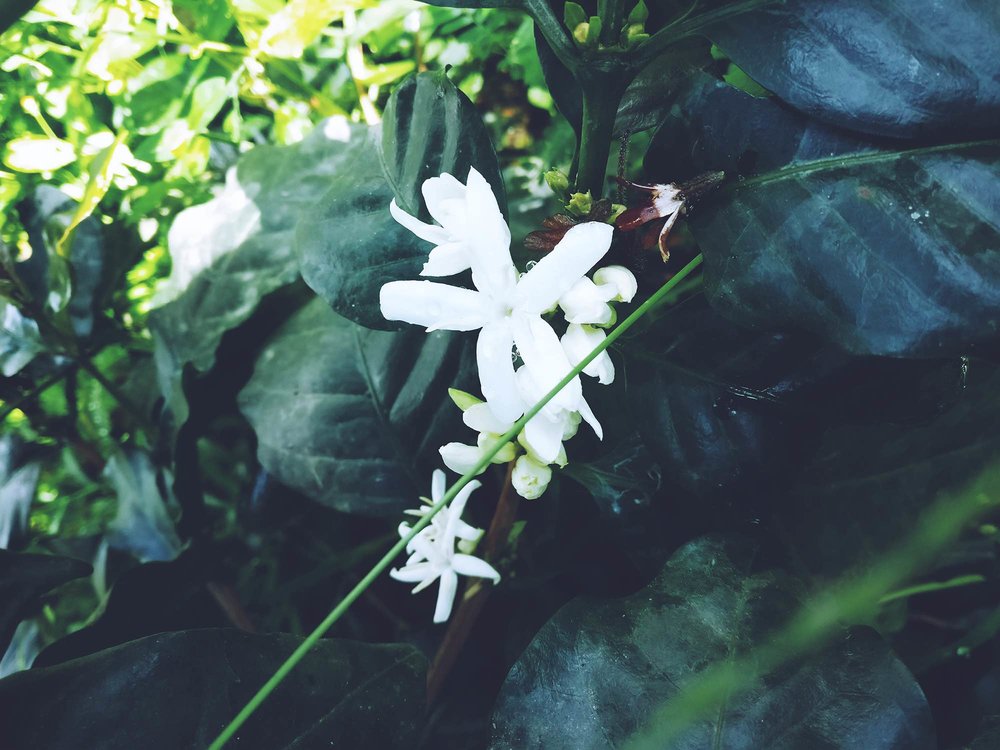
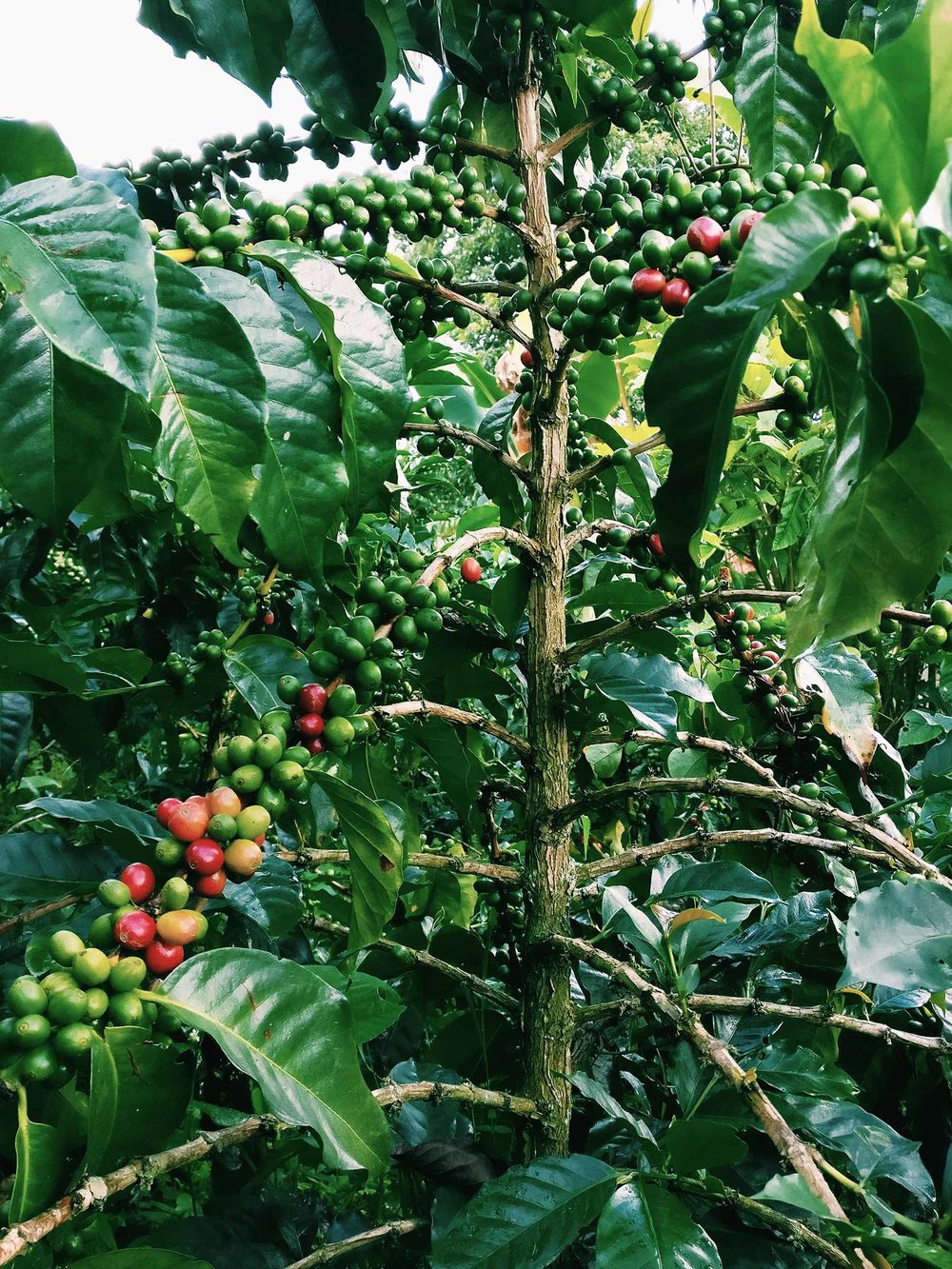
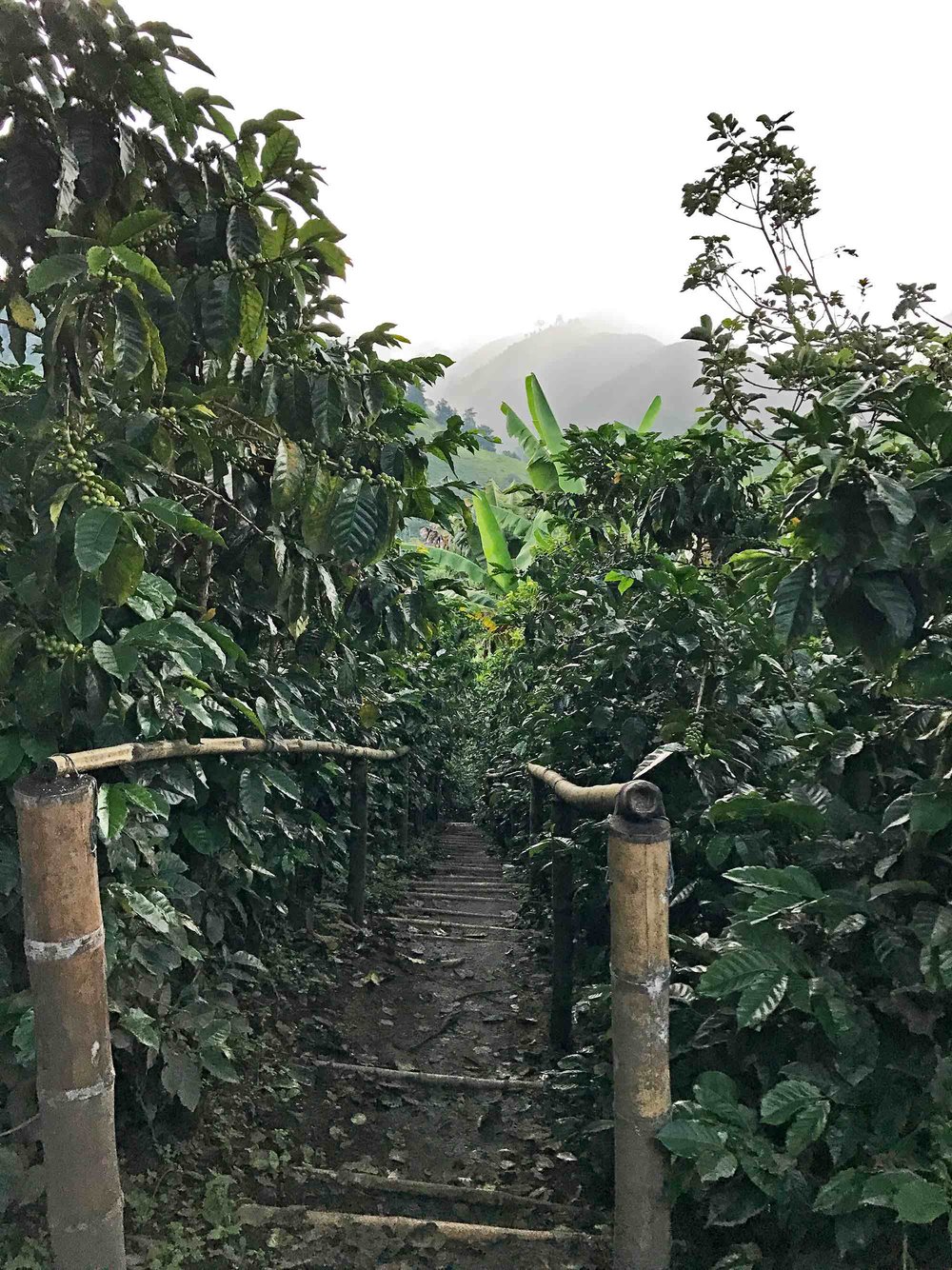
On La Granada, the family farm where Charlotte was based, the owner and head farmer, Jesús, grows the coffee plants in combination with banana and plantain trees, corn, beans, yucca plants and many other native fruit trees to create a diverse, healthy ecosystem of plants, insects, and birds. For that reason, he does not need to use any chemicals.
This biodiversity creates a healthy ecosystem because the different plants, insects and birds nurture each other with their different nutrients and naturally control each other so no diseases can break out.
This method is called polyculture and is one of the principles of permaculture; a creative design process based on whole-systems thinking informed by ethics and sustainability in order to re-design our environment and our behavior to use less of our world's resources.
This multi-cropping method is the best way of producing or growing any crop. The alternative and most common is called mono-cropping. This requires more chemicals as there is no variety to assist with protecting the crops and enriching the soil. Moreover, these single crops will only require more and more chemicals in the future because of climate change: rising temperatures are increasing the presence of plagues.
Coffee plants start producing coffee at around 3-5 years and can live up to 100 years! However, they are most productive between the ages of 7 to 20. Afterwards, the plants “retire” and produce much less coffee. Thus, farmers have plants of different ages and are constantly growing new plants in their nursery so that they can renew their coffee plants when necessary.
Depending on the region, there are one or two harvest seasons per year during which large groups of workers get into the fields to collect the coffee berries.
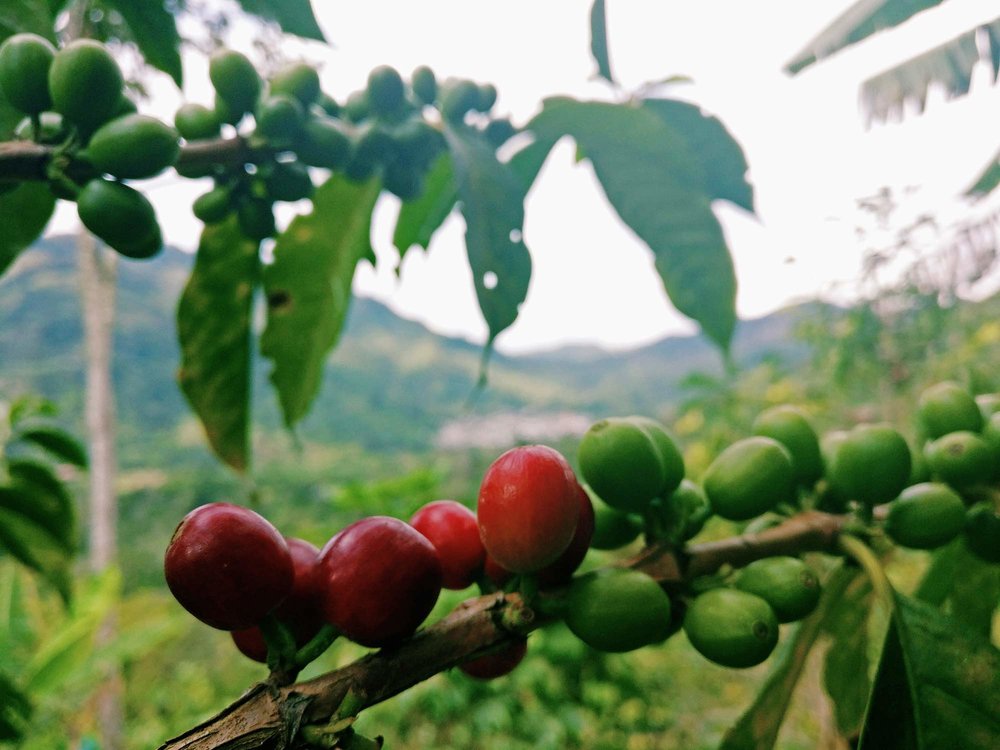
coffee berries
Once ripe, the red or yellow coffee berries are hand-picked and brought to a water tank. Underwater, any vain berries (bad, empty, underdeveloped, eaten by a little insect or disease) float and are taken away. Sometimes, the farmer does a second selection in which overripe berries are also taken away by hand.
Farmers do this selection to increase the quality of their coffee: the more they take out the bad beans, the higher the quality of their coffee. This means that they can get more money for it when selling, and that they will probably sell faster.
Next, the fruits go through a machine to split the shell from the actual beige-coloured beans.
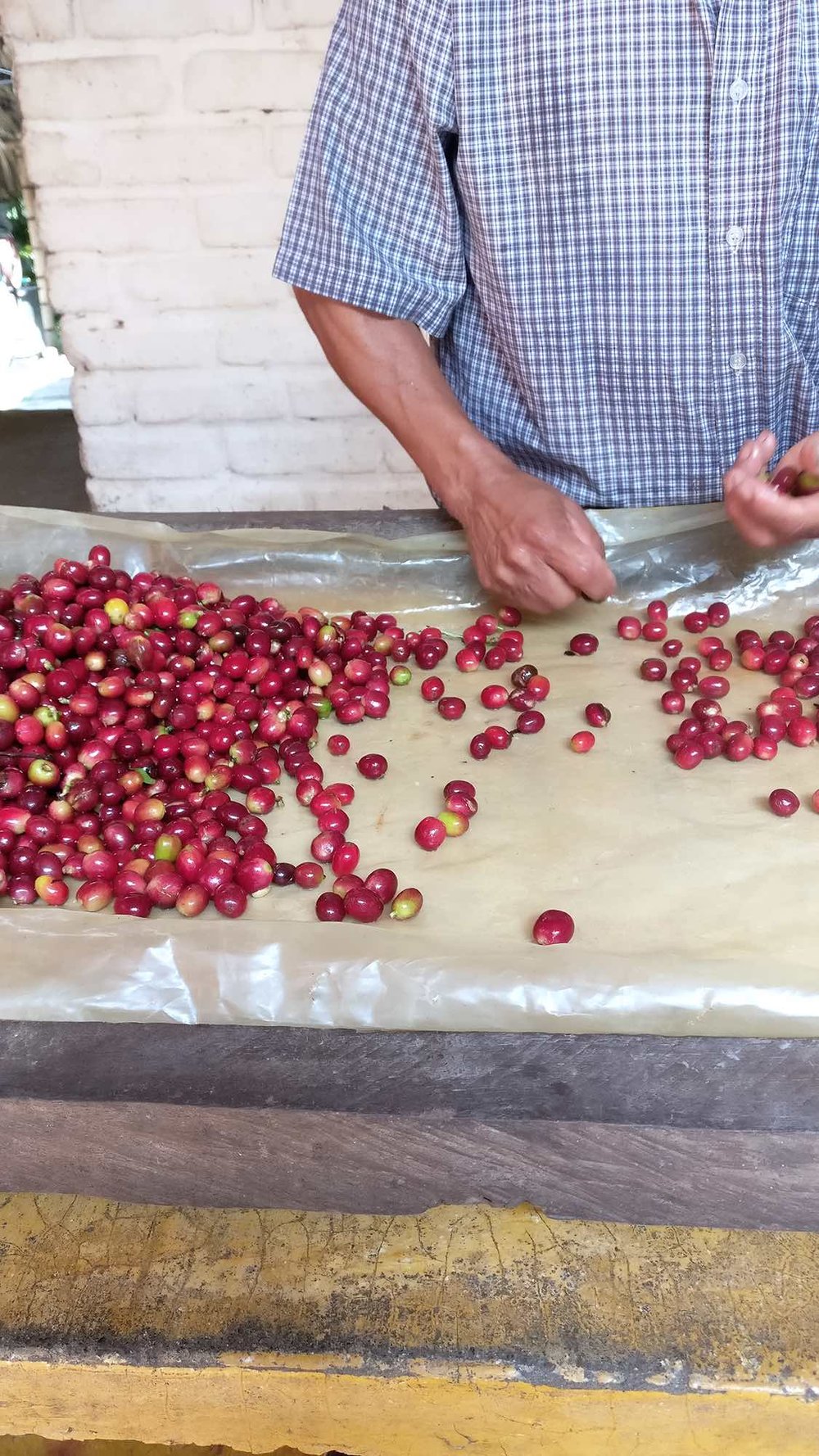
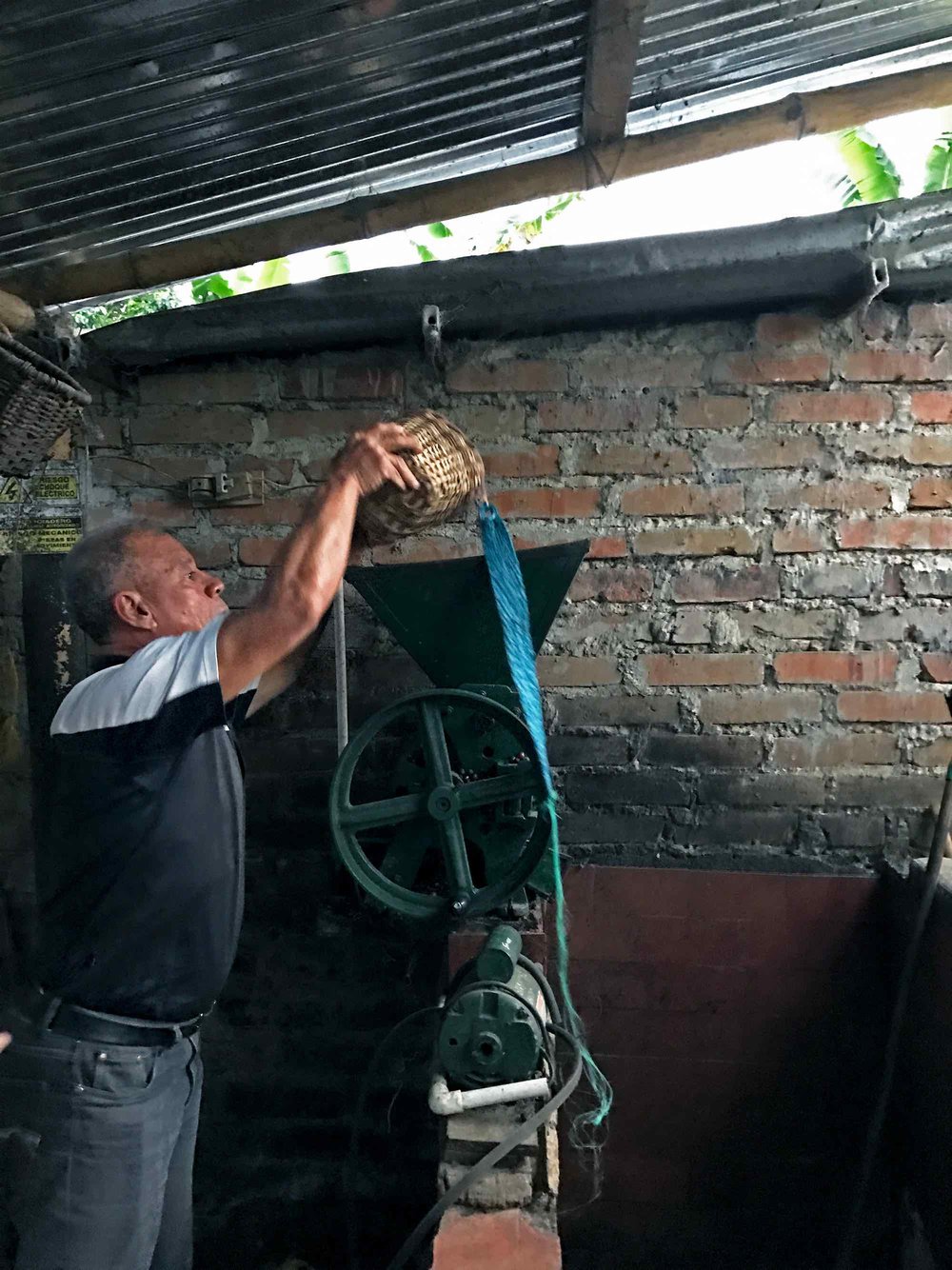
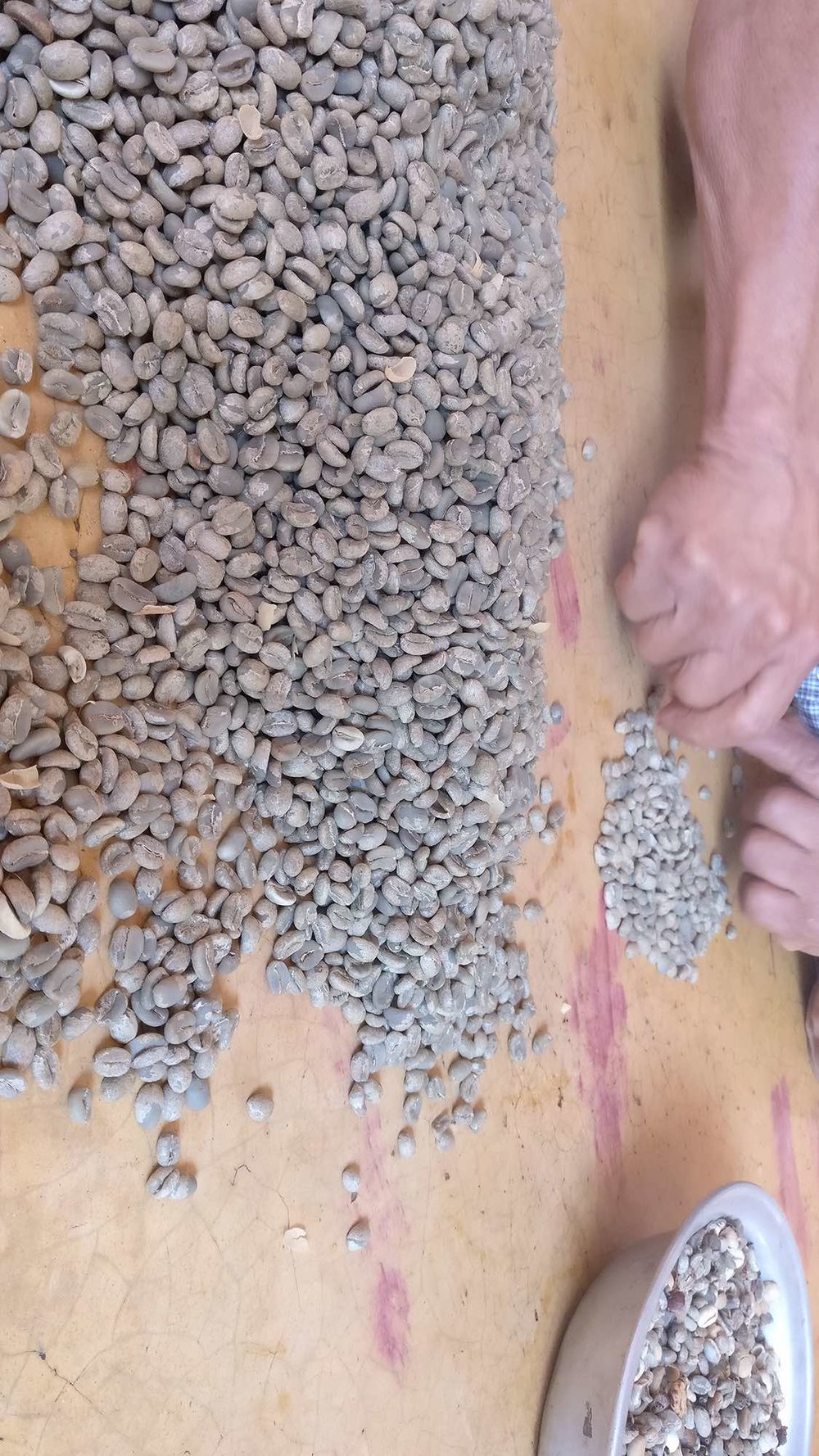
Now, the beans are left to ferment for a certain amount of hours in tanks and/or washed with water.
Afterwards, the beans are laid to dry, preferably in the sun on the roof tops of the typical farm houses of this region. The drying of coffee can take days or even weeks, depending on the altitude and humidity of the farm.
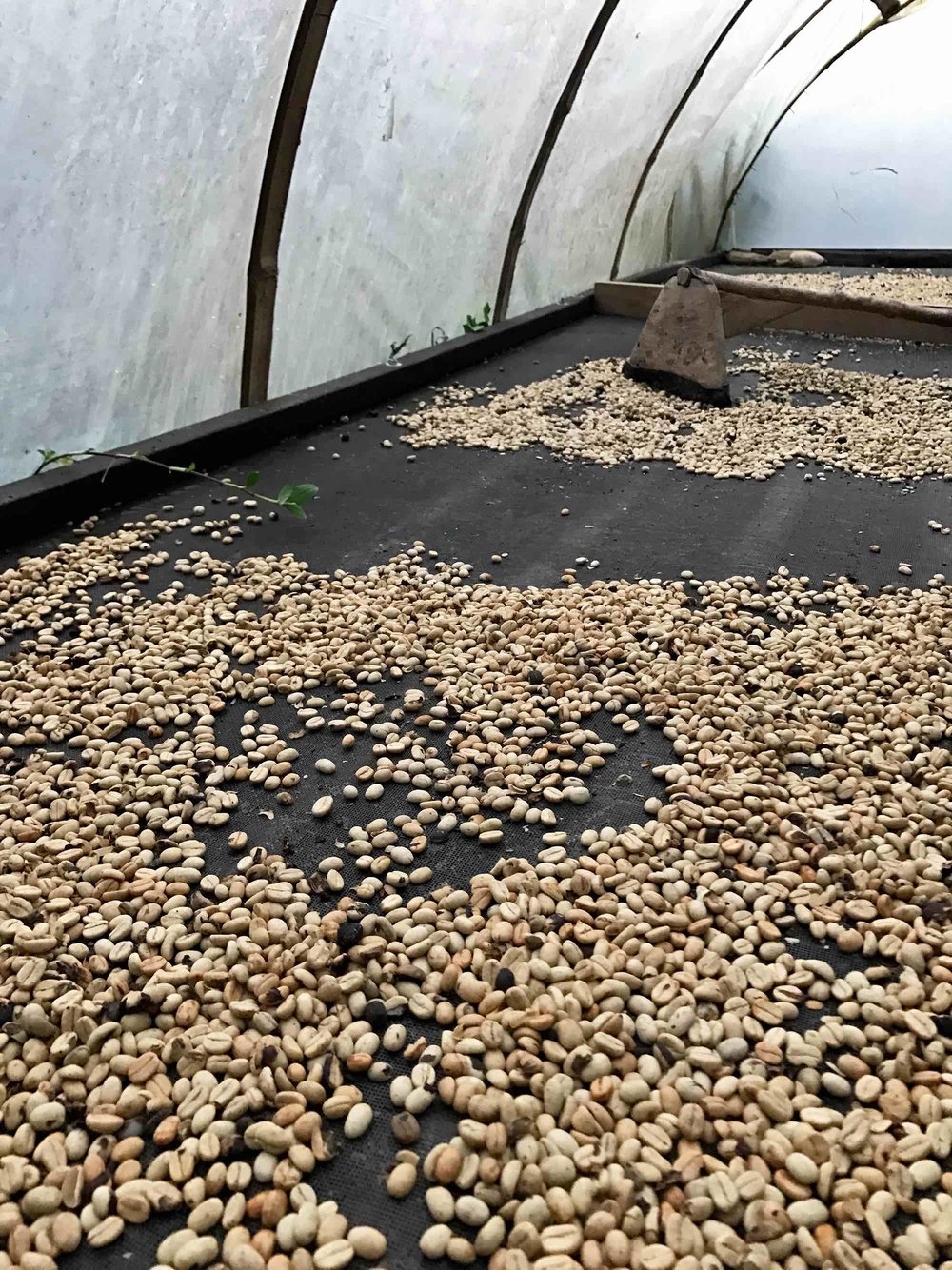

Once dry, there is another parchment peel that is taken off the beans and later used in the farmer’s compost. At this point, the coffee beans have a greenish color. Often, farmers will go through another selection process to take out even more defected beans.
Roasting Coffee Beans
Finally, it is time to roast the remaining good beans to varying degrees from Light to Very Dark.
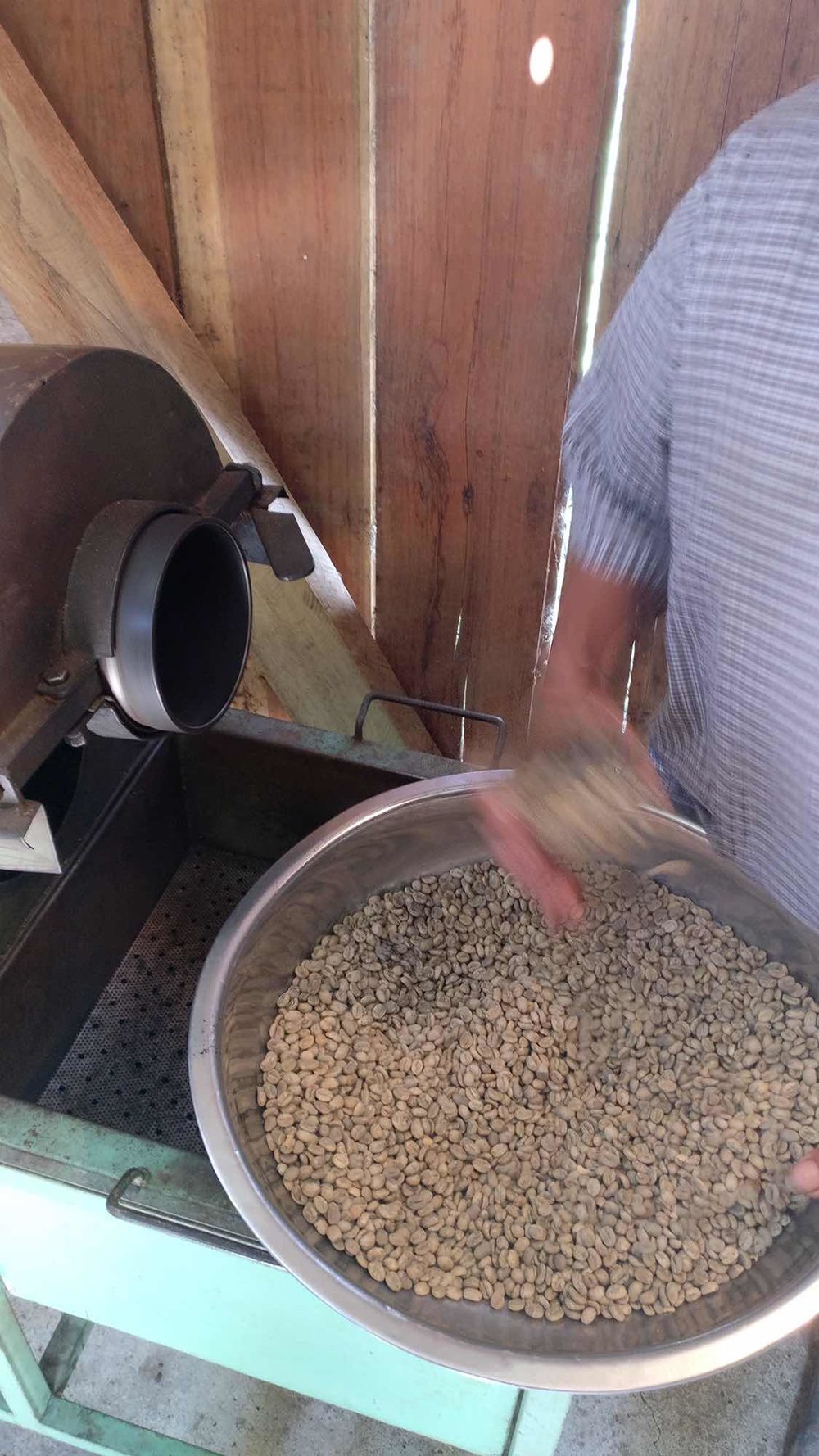
Roasting coffee in Pijao, Colombia
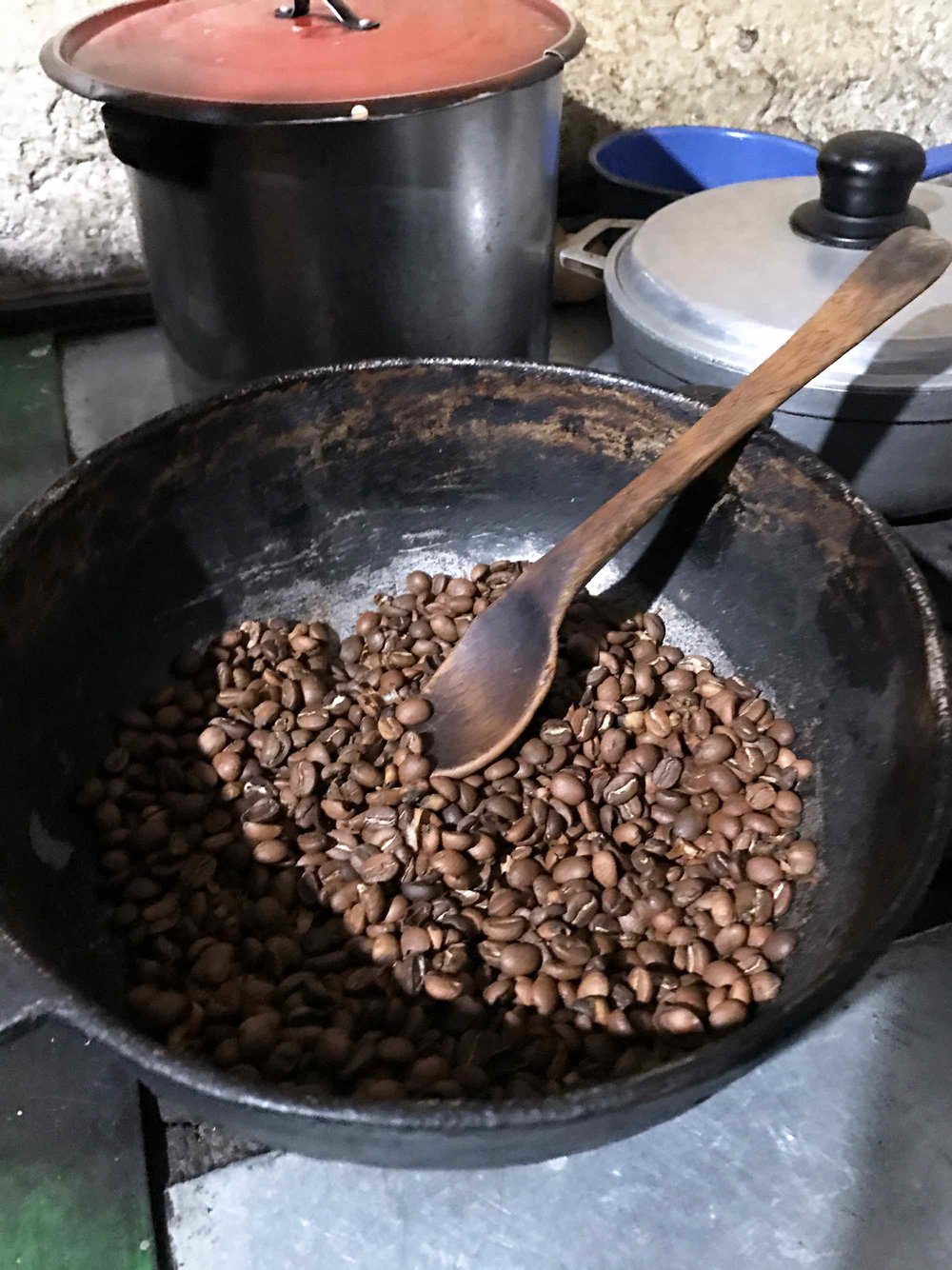
Roasting Coffee in Salento, Colombia
beaWhile the environment has an important effect on the quality and taste of coffee beans, roasting is even more important to the overall taste.
Roasting brings out the aroma and flavor that is locked inside the green coffee beans.
Beans are roasted in roasting machines for roughly 10 to 20 minutes depending on batch size and desired roast. This process requires knowledge and skill as the temperature needs to be controlled in a curve.
Light roasting will bring out sweeter flavors and is more acidic, while strong roasting will bring out more bitter tastes. It is in the roasting stage that we reach the chocolaty brown color and deliciously scented coffee beans we know and love!
FUN FACT: Light roasts actually have more caffeine than dark roasts since some caffeine is actually burned out during the roasting process.
It takes years of training to become an expert roaster with the ability to “read” the beans and make decisions with split-second timing. The difference between perfectly roasted coffee and a ruined batch can be a matter of seconds.
Roasted coffee needs about a day of rest before it can be brewed, which is almost never a problem for the average consumer.
Grinding & Brewing Coffee
The best way to brew coffee is with freshly ground beans.
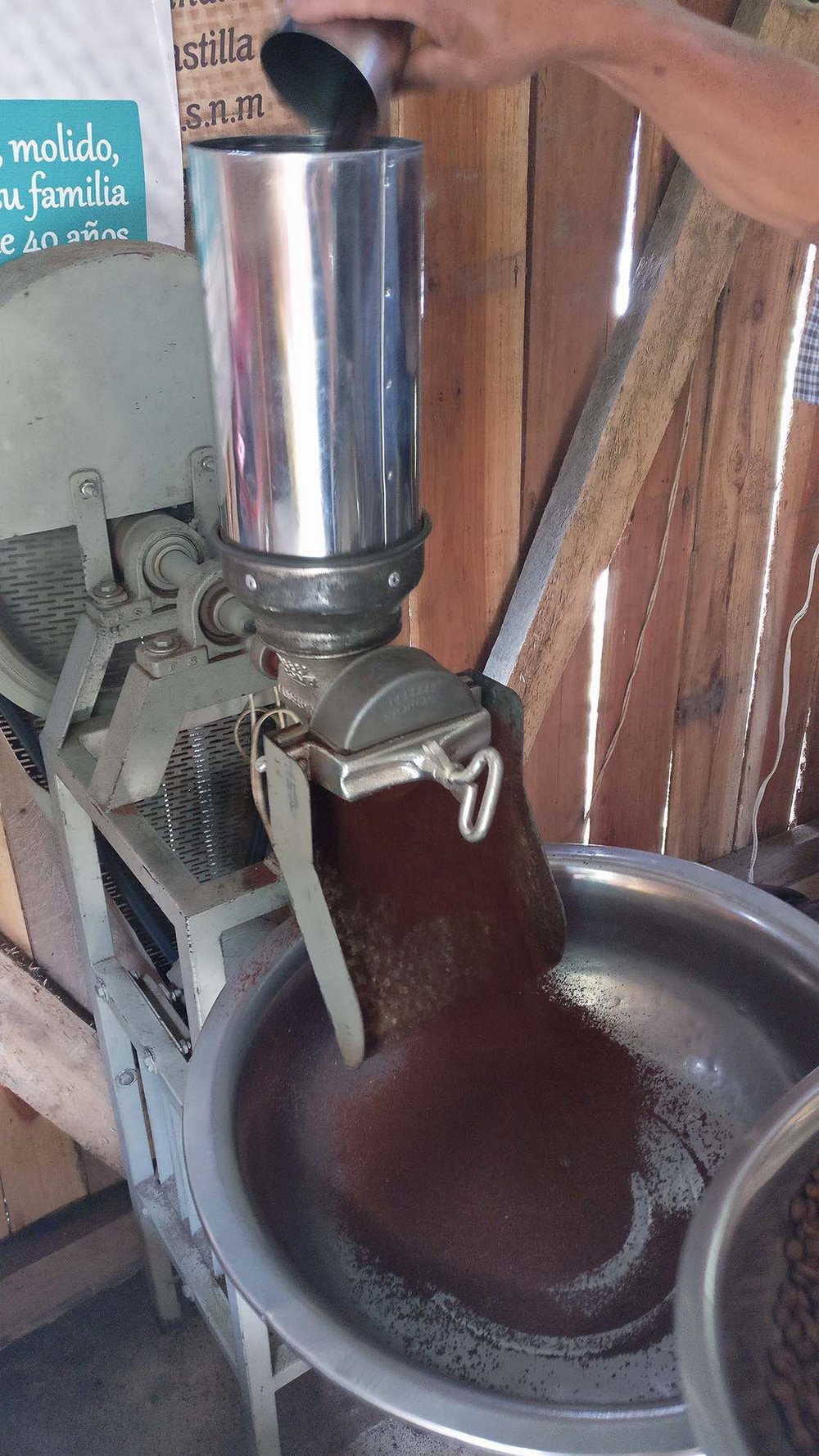
Grinding Coffee in Pijao, Colombia
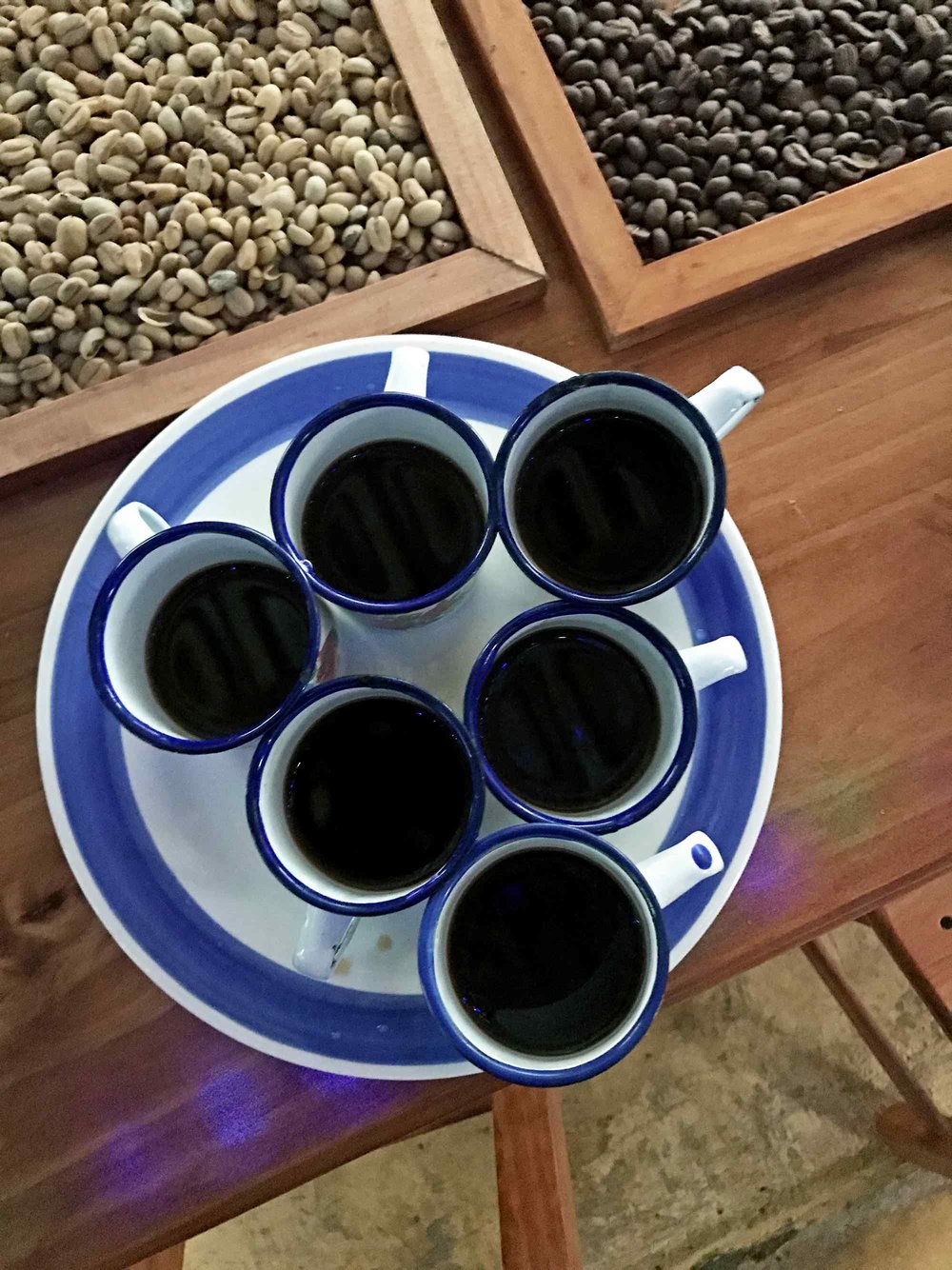
Tasting Coffee in Salento, Colombia
Grinding coffee can be done at different “sizes” as to fit the brewing method. For example, roughly ground coffee is best for the French Press brewing method, while an espresso coffee requires finely ground coffee. So make sure to always buy your coffee beans whole so you can ground just before use!
The last step is to brew coffee with an espresso machine, a filter, a French Press, a Chemex or any other method. Hello, delicious coffee!
This sounds like a lot of steps, however it is just a summary of the whole process. In fact, farmers can decide to wash the beans more or less, leave the thick shell on, dry the beans in other ways, combine or split different varieties of coffee plants, do more or less selections… All ending up in different flavors of your coffee.
Because good coffee may have a wide variety of aromas, bodies and flavors – coffee even has more diversity than wine and the job of “cupper” or “coffee sommelier” is very important!
The coffee production process Charlotte was taught on the farm requires many hands, precision and passion. The end product is not only an organic coffee, but also a “specialty coffee”, a coffee of a very high quality. This organic and selective process is exactly the process you would want for your coffee as it is the most ethical way of consuming coffee.
Not only do you end up with a more delicious cup of coffee, it is also the most sustainable way of producing coffee. The many coffee bean selections offer job opportunities, the multi-cropping is good for our planet and the farmers can sell their specialty and organic coffee for a fairer price. Additionally, there is little to no waste as the beans that are selected as “bad” are not thrown away - they are sold in one big batch to the cooperatives for a lower price. This is the highly roasted coffee used in many standard coffee brands and instant coffees.
"I was lucky enough to live with passionate coffee farmers for some time, becoming friends with the workers that take care of the coffee we drink, and learning about biodiversity and sustainable farming. It has taught me a lot and made me become even more passionate about coffee myself." - Charlotte
Where is Colombia's Coffee Region?
The primary coffee region of Colombia is located in the Paisa region in the rural area between the three major cities of Colombia; Medellín, Cali and Bogotá.
This coffee region includes the towns of Armenia, Jardín, Manizales, Pereira, Pijao and Salento.
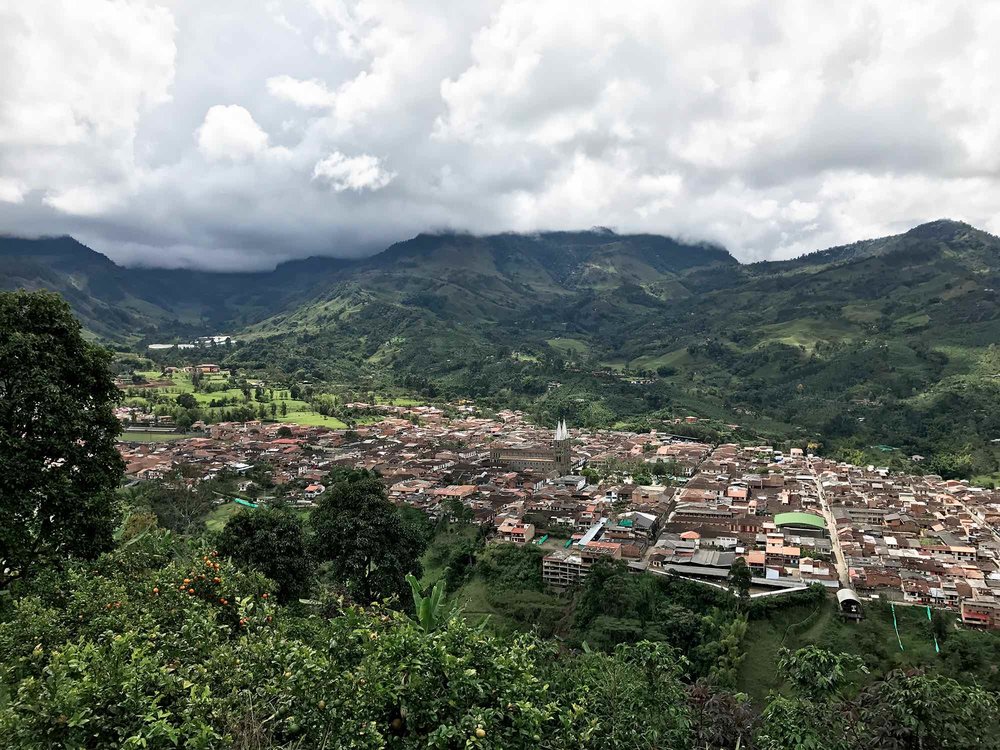
Town of Jardín, Colombia Coffee Region
FUN FACT: People from the region near Medellín are known as "Paisa". They are very proud of their Paisa culture and you'll often see and hear this term while traveling Colombia.
Altitude is important for growing rich coffee. Coffee grown at higher elevations allows the coffee fruit to develop more slowly, therefore enabling a richer, denser coffee bean with potential for more complex flavors.
Proximity to the equator also plays an important role in growing beans for a delicious cup of coffee since coffee grows best in warm climates and high altitudes. This mix of high altitude and warm climate can only be found near the equator, because the further you move away from the equator, the colder temperatures become at high elevations.
In 2011, the Coffee Cultural Landscape of Colombia was listed as a UNESCO World Heritage Site.
Coffee Tours in Colombia's Coffee Triangle
Good news is that anyone can enjoy this mountainous coffee paradise!
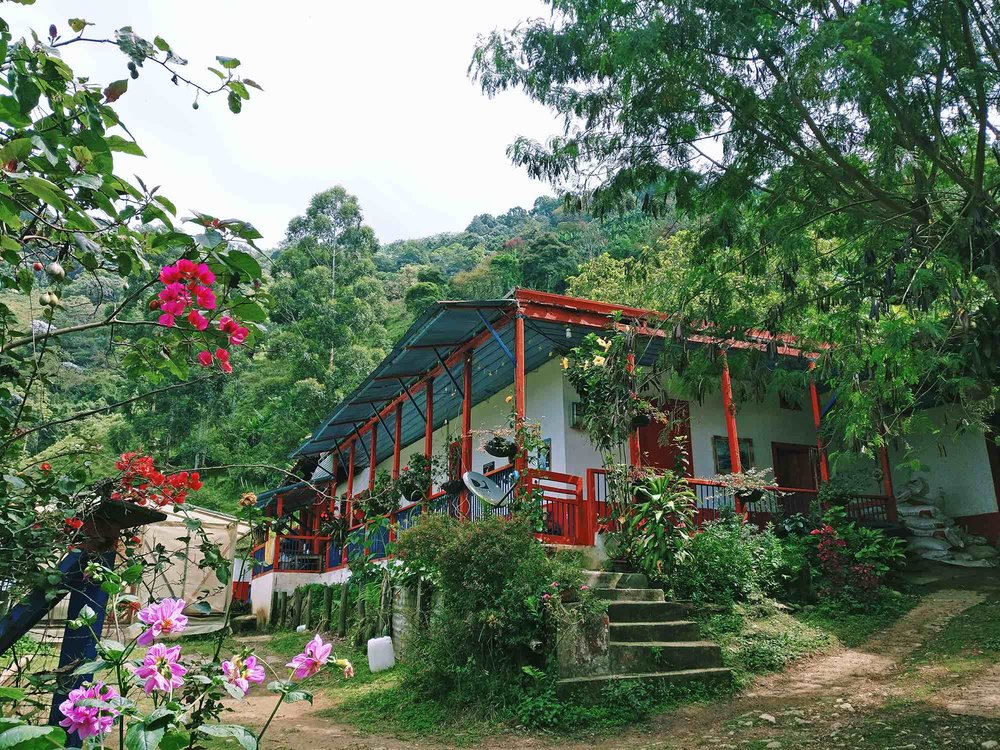
For Spanish speakers or groups with a Spanish speaking guide, we highly recommend visiting Charlotte's Colombian family on their farm La Granada. You can take a half day tour and see all of the magic of the coffee production for yourself. The tour includes a walk around the coffee fields, seeing the whole production process, a coffee tasting and a delicious lunch prepared by Marina, his wife.
Jesús and Marina don’t have one standardized tour and will personalize it according to your wishes. On average it takes about 4 hours, costs around 25,000 Colombian Pesos per person and the lunch includes a meat or vegetarian meal, a delicious juice from fresh garden fruits and a dessert with fresh honey from the bees.
The near by towns of Salento and Jardín also offer coffee tours. They are a bit more touristy but still very lovely, quaint and colorful towns.
You can stay in or nears the town of Armenia, Jardín, Manizales, Pereira and Salento in order to explore the coffee farms in the surrounding area.
In Salento, we recommend Finca Momota, a coffee farm which combines the principles of permaculture with coffee farming, and offers similar tours to La Granada in English.
Whether you get the chance to visit a coffee farm or not… Next time you drink coffee, take a second to appreciate where it comes from!
Want to have a taste of Colombian coffee for yourself? Contact us to plan your personal experience in Colombia's coffee region and beyond.
A very special and heartfelt thanks to our good friend Charlotte for helping to write this post. You can follow along with her journey here.
Save on Pinterest
